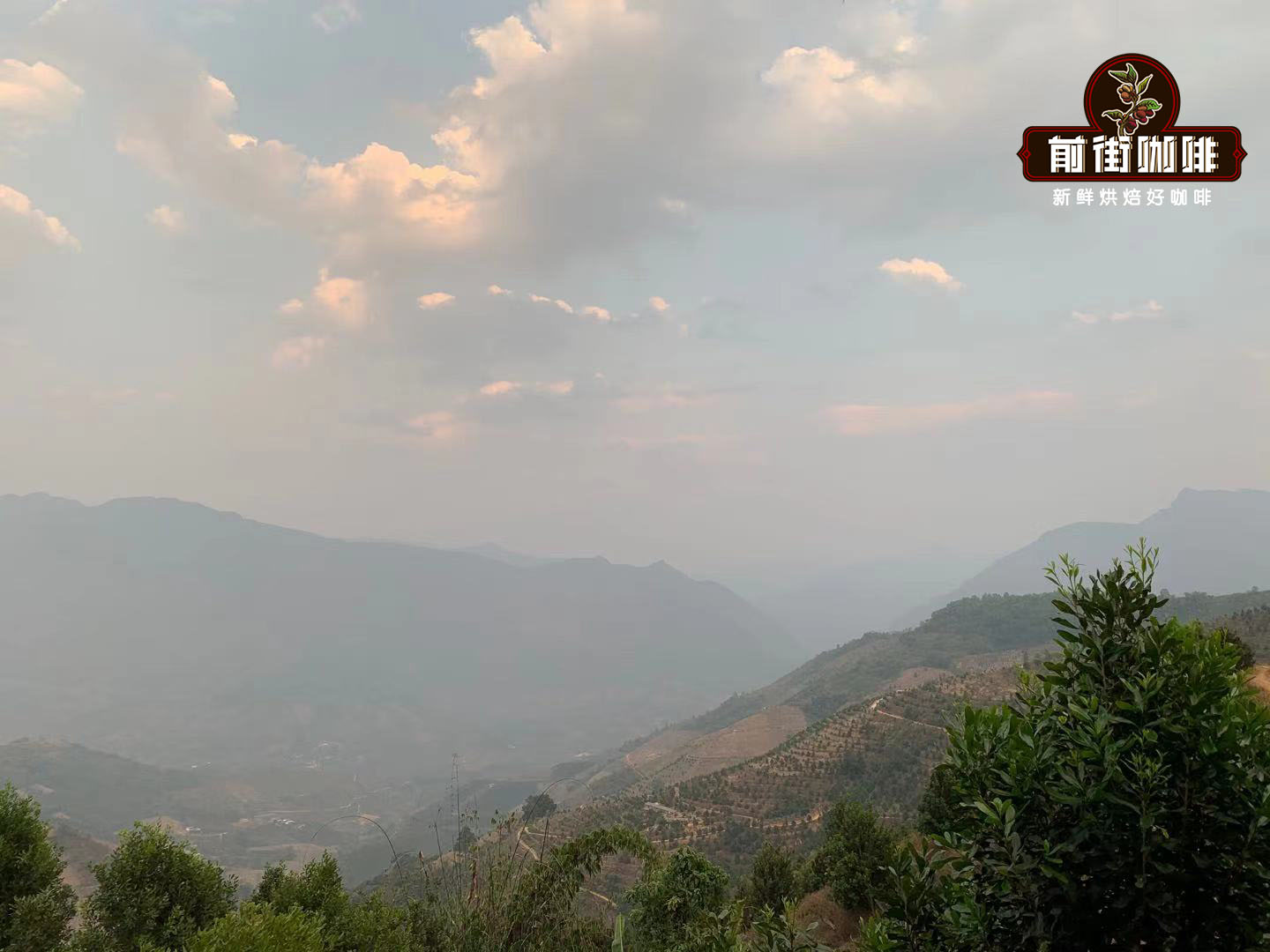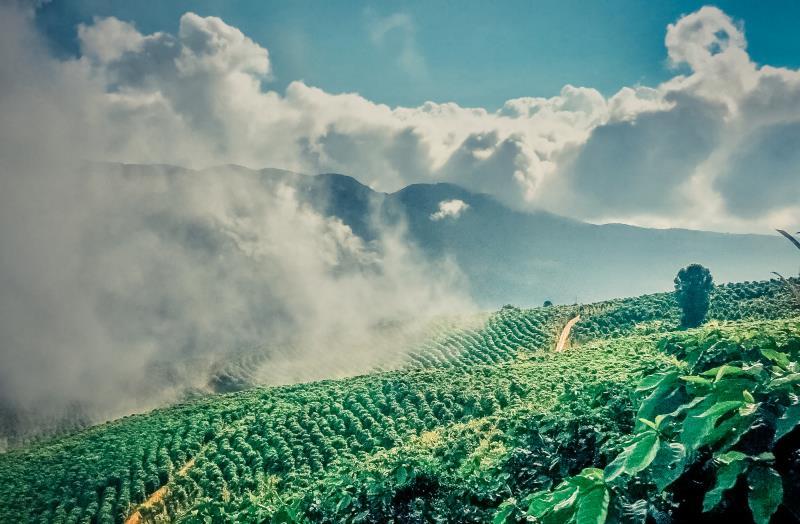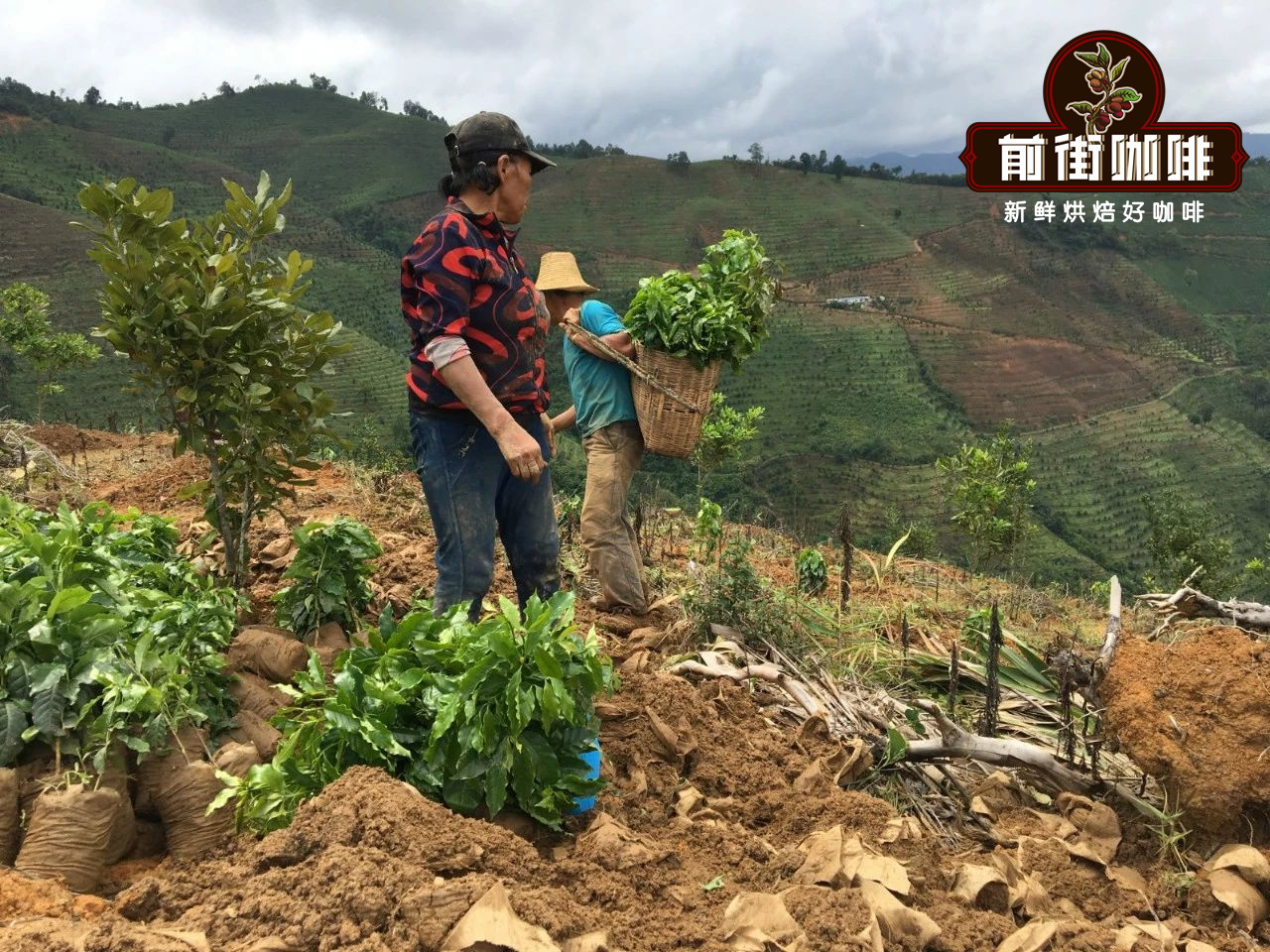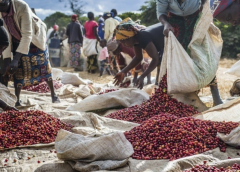Which is better Yunnan Coffee or Hainan Coffee? flavor and taste characteristics and variety advantages of Yunnan small-grain coffee
Coffee is grown in both Yunnan and Hainan, but only Yunnan coffee is famous. Why? In front of this article, let's talk about Yunnan coffee and Hainan coffee.
When will Yunnan coffee be introduced into coffee trees?
The first coffee tree in Yunnan was introduced by the French missionary Tian Deneng on the Sino-Vietnamese border in 1904. This coffee tree produces small coffee fruit and small beans, so it is called small-grain coffee (later genetic comparison confirmed the tin card variety of small-grain coffee). Due to the low fruit yield, people take out the seeds (coffee beans) after harvest and bury them in the ground as ordinary plants, and no one cultivates them as carefully as his economic crops.

When will Hainan coffee be introduced into coffee trees?
The first coffee tree in Hainan was introduced from Malaysia in 1908. Due to the low altitude and hot and humid climate in Malaysia, the varieties of coffee trees planted are Robusta coffee varieties that are resistant to heat and humidity and are better resistant to insect pests. Robusta coffee fruit is too large, coffee beans will be larger than Arabica varieties, but the flavor is not as delicate as Arabica varieties. It is not difficult to see that the main variety of coffee in Hainan is Robusta.
Development of Coffee in Yunnan
After the founding of New China, under the guidance of experts, Yunnan began to plant coffee trees in bulk and supply large quantities of coffee beans to the Soviet Union. At that time, the scale of coffee cultivation in Yunnan once reached 4000 hectares. After Sino-Soviet relations deteriorated, the Soviet Union banned China from selling coffee beans to it, and the history of coffee in Yunnan was torn apart, which led Yunnan farmers to cut down coffee trees on a large scale and plant other coffee trees. In the late 1980s and early 1990s, Nestl é began to grow coffee in Yunnan. In order to increase its yield, it began to introduce Katim coffee varieties from Brazil. In 1997, the planting area of Yunnan reached 7800 hectares. (at this time, almost all of Yunnan looked at the tin card with low yield and changed to the Katim variety with high yield.)

After 2000, Colombian coffee beans were obviously close to Yunnan coffee beans and could sell for 25 yuan per kilogram, while Yunnan coffee beans could only sell for 15 yuan per kilogram. When there is a large gap between coffee purchase price and futures price, the purchase price of Yunnan coffee beans fluctuates constantly, which leads to the situation that farmers suddenly give up on coffee cultivation and suddenly plant it meticulously.
In 2008, Yunnan Pu'er tea began not to buy Pu'er tea because of hype. In order to reduce the losses of tea farmers, the government encouraged people to start planting coffee trees. At that time, the highest price was more than 40 yuan / kg. Under such a market, the planting area of coffee in Yunnan has increased rapidly again. However, with the emergence of the boutique coffee industry, the flavor of Yunnan Katim coffee beans has always been unable to keep up with the boutique era, and can not get rid of the fate that "Yunnan coffee is an instant raw material". Yunnan coffee fell back to about 17 yuan / kg in 2012.

Until the continuous development of the boutique coffee industry in recent years, the treatment of coffee beans has become more and more innovative, through a variety of innovative ways to deal with coffee beans to improve the flavor quality of coffee. Yunnan coffee also valued this point, using special treatment to cover up the deficiency in the flavor of Katim coffee, and then everyone drank it and said yes! So Yunnan coffee beans began to be active in the boutique coffee market. But Qianjie Coffee thinks that if you want a good cup of coffee, you can't cover it up. The taste of the food is the most important. So in 2014, a variety of iron pickup was planted in Yunnan, which is, yes, the same variety of the original coffee tree in Yunnan.

Qianjie coffee is chosen because it is the oldest coffee variety, and the Arabica coffee varieties we see later are all derived from this variety. The variety itself has a clean coffee flavor, although the yield is not as high as Katim, cultivation is difficult, but the delicate acid has balanced flavor can always make people aftertaste. Yunnan iron pickup coffee beans grown in Qianjie have delicate acidity, licorice-like sweetness, slightly lower thickness and overall balance.

The development of coffee in Hainan
Hainan Island covers an area of 34000 square kilometers. Except for coastal beaches and a few mountainous areas in central China, Hainan Island can develop coffee cultivation and has a unique advantage in the development of coffee industry. In 1987, the first instant coffee factory in China was born in Hainan. At that time, Hainan Investment Group invested in the establishment of a 1000 mu coffee demonstration and planting base in Sanjiang Town, Qiongshan City, Hainan Province, and solved the problem of shortage of raw materials fundamentally by the way of "company + farmers." This indicates that Hainan coffee industry is working hard to solve the bottleneck restricting its development and make Hainan's advantageous industry bigger and stronger. However, more than a decade later, "Hainan Coffee" has not been able to quickly occupy the market, on the contrary, foreign "Nestle" coffee has entered China and set up a factory, rapidly occupying 70% of the market. At this time, "Hainan Coffee" can only retreat to more than 10% of the market share.

Why is "Hainan Coffee" not developed with such good resources? The important reason is the shortage of raw materials and enterprises have no rice to put into the pot. Hainan began to plant coffee on a large scale in the 1960s and reached more than 200,000 mu in the early 1980s. However, due to the lack of unified development, such as breeding of improved varieties, technical support, rational allocation of planting and deep processing, industrialization development, international trade, etc., "coffee hurts farmers". At present, the planting area of coffee has shrunk to 1 ∕ 10 in the early 1980s. According to the local coffee enterprises in Hainan, the raw materials purchased locally in Hainan account for only 1 ∕ 4 times 1 ∕ 3 of the raw materials needed by the whole plant every year, and most of the raw materials are imported or purchased from Yunnan. Every year, due to the increase in the cost of purchasing raw materials, the production cost of the enterprise increases greatly.
Secondly, although the supply of products falls short of demand, the production capacity of enterprises is limited and does not form a solid "sphere of influence" and due brand benefits. When the coffee factory in Hainan was established in 1987, it was designed to have an annual production capacity of only 300 tons, while some poor coffee-producing countries built coffee processing plants with a scale of more than 10,000 tons. According to local coffee enterprises, Hainan has long been in the forefront of domestic instant coffee enterprises in terms of new product development. at present, there are more than 10 varieties, and the products are sold in 31 provinces, municipalities, and autonomous regions across the country, and some of them are exported abroad, and the products are in short supply. however, due to scale, production capacity and other reasons, although the scope of product sales is wide, but there are not many large-scale markets. It is imperative for enterprises to expand production capacity, but there is a lack of sufficient financial support.

Industry insiders point out that from the experience of coffee development in some countries in Africa and South Asia, the government provides improved varieties and technology free of charge, issues grain subsidies or interest-free, low-interest loans, and reduces or exempts growers' income tax. It is very important for coffee cultivation. Hainan coffee should also strengthen macro-guidance to change the current problems of coffee cultivation in their own way, single variety, backward technology, unstable quality, difficult marketing and so on.
In view of the bottleneck in the development of Hainan coffee, the government and enterprises have begun to solve it. Recently, the Hainan provincial party committee and provincial government proposed that when vigorously developing tropical high-efficiency agriculture, we should pay attention to the development of superior resource industries and make use of Hainan's unique environmental advantages to develop and expand all kinds of irreplaceable resource industries. This provides a good external environment for coffee raw material production. Relevant business units also actively began to take action, in addition to the establishment of a 1000 mu coffee demonstration and planting base, there will be other follow-up measures. With the renewal and transformation of equipment, the production scale has been increased to nearly 400 tons per year, and the variety and scale have been further improved; professional design companies have been hired to reposition and repackage enterprises and products, and plan to reshape their image and return to the stage.
Why Yunnan coffee can be developed into boutique coffee, but Hainan coffee is not?
Because of the variety of coffee trees. As mentioned above in Qianjie just now, coffee trees in Yunnan are mainly planted with Katim coffee varieties, and iron card varieties are also planted in large quantities. Hainan coffee has always been planted with Robusta varieties.
Iron pickup, as an ancient native species of Arabica, has a clean coffee flavor and bright acidity, while Katim is a hybrid of Arabica and Robusta, but Robusta accounts for only 25% of the genes. so even if the flavor is not as delicate as the iron pickup, it can make people fall in love with him after treatment.

On the other hand, Robusta is not. Because of its own variety, compared with Arabica coffee beans, Robusta has higher contents of caffeine, amino acids and chlorogenic acid, which is the source of bitter taste. so Robusta was born without the unique elegant aroma of Arabica beans, replaced by a fuller and lower taste, as well as walnuts, peanuts, hazelnuts, wheat, grains and other flavors. There may even be a pungent smell of soil. Robusta is often spurned by the boutique coffee industry because of its poor flavor, so it can only be used as an instant raw material all the time.
Important Notice :
前街咖啡 FrontStreet Coffee has moved to new addredd:
FrontStreet Coffee Address: 315,Donghua East Road,GuangZhou
Tel:020 38364473
- Prev

What's the difference between Kimmel Manor and Paradise Bird Manor in Papua New Guinea?
For the exchange of professional baristas, please pay attention to the coffee workshop (Wechat official account cafe_style) Papua New Guinea is located in the east of the Indonesian archipelago. Papua New Guinea is mainly highland and has a model of large manors / farms and small farmers, growing a variety of coffee varieties. The coffee flavor of Papua New Guinea is very different from that of other Asian regions such as Indonesia, South Asia, India or
- Next

What is the Yega Shefi Red Cherry Project?
What is the Yega Shefi Red Cherry Project? ABOUT THE RED CHERRY PROJECT OPERATION CHERRY RED Many friends are familiar with the name. So what exactly is the Red Cherry Project? Maybe only a few people can say it. Ethiopia, known as the birthplace of coffee, has a large area of fine tradition
Related
- Detailed explanation of Jadeite planting Land in Panamanian Jadeite Manor introduction to the grading system of Jadeite competitive bidding, Red bid, Green bid and Rose Summer
- Story of Coffee planting in Brenka region of Costa Rica Stonehenge Manor anaerobic heavy honey treatment of flavor mouth
- What's on the barrel of Blue Mountain Coffee beans?
- Can American coffee also pull flowers? How to use hot American style to pull out a good-looking pattern?
- Can you make a cold extract with coffee beans? What is the right proportion for cold-extracted coffee formula?
- Indonesian PWN Gold Mandrine Coffee Origin Features Flavor How to Chong? Mandolin coffee is American.
- A brief introduction to the flavor characteristics of Brazilian yellow bourbon coffee beans
- What is the effect of different water quality on the flavor of cold-extracted coffee? What kind of water is best for brewing coffee?
- Why do you think of Rose Summer whenever you mention Panamanian coffee?
- Introduction to the characteristics of authentic blue mountain coffee bean producing areas? What is the CIB Coffee Authority in Jamaica?

